រាជបណ្ឌិត្យសភាកម្ពុជា
Royal Academy of Cambodia
Royal Academy of Cambodia
The Preah Vihear temple, a UNESCO World Heritage Site, stands as a testament to the architectural brilliance and historical legacy of the Khmer Empire. In recent discussions, a compelling proposal has surfaced – the permanent closure of the temple's entrance from Thailand. This proposition is viewed by advocates as a crucial step toward ensuring the sustained preservation of this cultural marvel. However, this measure is not without complexities, as it carries implications for diplomatic relations, local economies, and global efforts to protect cultural heritage.
The temple, situated atop a cliff along the Cambodia-Thailand border, has faced numerous challenges throughout its existence. Historical territorial disputes and damages incurred during armed conflicts have highlighted the vulnerability of this sacred site. The call for closing the entrance from Thailand is seen as a proactive measure to shield the temple from potential risks and secure its longevity for future generations.
Proponents of the closure argue that prioritizing the temple's preservation aligns with broader global efforts to protect cultural heritage. They emphasize the collective responsibility of nations to collaborate in safeguarding these shared legacies. The closure is seen as a necessary step to mitigate the impact of political tensions and potential damages that could arise from external factors.
However, the proposal carries significant diplomatic implications, as it involves an international border. Closing an entrance from one country may strain relations between Cambodia and Thailand. Striking a balance between preserving cultural heritage and maintaining positive international ties becomes a delicate task. The global implications of how nations collaborate in safeguarding shared treasures are at the forefront of this debate.
Opponents of the closure raise concerns about potential economic and diplomatic repercussions. They argue that the temple's accessibility from both countries contributes to tourism, which in turn supports local economies. Closing the entrance may lead to a decline in tourism, affecting businesses and livelihoods in the surrounding areas. Balancing the economic impact with the imperative of heritage preservation becomes a crucial aspect of this proposal.
In the midst of these considerations, a balanced approach is necessary. Engaging in open dialogue and diplomatic negotiations becomes imperative for both Cambodia and Thailand. Seeking solutions that mutually prioritize the conservation of Preah Vihear while minimizing adverse effects on diplomatic ties and local economies is crucial. The challenge lies in finding a middle ground that respects the temple's historical significance and ensures its preservation while fostering cooperation between nations.
The fate of Preah Vihear temple is not only a matter of regional concern but also a global one. The interconnectedness of cultural heritage and the shared responsibility of nations in its preservation underscore the importance of international collaboration. Efforts to protect such sites should transcend geopolitical boundaries, promoting a sense of collective stewardship for the benefit of humanity.
As the discussions unfold, it is essential to consider the impact on local communities. A careful examination of potential economic and social repercussions should guide decision-making. Implementing measures to mitigate any adverse effects on local livelihoods, such as alternative tourism strategies or community development programs, can be integral to finding a sustainable solution.
Tourism plays a significant role in the economic ecosystem surrounding Preah Vihear temple. Opponents of the closure argue that restricting access may deter visitors, leading to a decline in revenue for local businesses. Proponents, however, contend that sustainable tourism practices, coupled with careful planning, can minimize the economic impact while preserving the temple's sanctity. Striking a balance between tourism and conservation efforts is crucial for the long-term viability of both.
The preservation of cultural heritage is a global endeavor that transcends national interests. Nations worldwide are recognizing the importance of protecting and conserving historical sites for future generations. The closure proposal for Preah Vihear temple reflects this broader trend, highlighting the need for a harmonious balance between safeguarding the past and fostering international collaboration.
As a UNESCO World Heritage Site, Preah Vihear temple comes under the umbrella of international cooperation for heritage protection. The role of UNESCO in mediating discussions and providing guidance on best practices becomes crucial. Collaborative efforts facilitated by UNESCO can ensure that decisions made regarding the temple's future align with global standards for heritage preservation.
Examining the experiences of other heritage sites facing similar challenges can provide valuable insights. Case studies of successful collaborations and innovative solutions to balance preservation and accessibility can inform decision-making for Preah Vihear temple. Learning from both the successes and failures of past endeavors contributes to a more informed and nuanced approach.
In navigating the diplomatic intricacies, cultural diplomacy emerges as a potent tool. Fostering understanding and appreciation of each nation's cultural heritage can create a common ground for collaboration. Cultural exchange programs, joint conservation projects, and educational initiatives can strengthen ties between Cambodia and Thailand, fostering a shared commitment to preserving Preah Vihear temple.
In the digital age, technology offers innovative solutions for monitoring and protecting heritage sites. Implementing state-of-the-art surveillance systems, real-time monitoring, and advanced preservation techniques can enhance the security of Preah Vihear temple. Collaborative efforts in technology-driven heritage protection can serve as a model for safeguarding cultural treasures globally.
As the world watches the unfolding discussions surrounding the closure of the Thai entrance to Preah Vihear temple, the complexities of preserving cultural heritage on the global stage become evident. Striking a harmonious balance between protecting the past and nurturing international relations will undoubtedly shape the legacy of this iconic site. The fate of Preah Vihear temple serves as a testament to the challenges and responsibilities associated with safeguarding our shared cultural heritage in an interconnected world.
----
Vichana Sar, a researcher based at the Royal Academy of Cambodia. He holds MPM from KDI School of Public Policy and Management [Public Administration and Global Governance & Political Economy] and MEd from Royal University of Phnom Penh [Managing and Planning].
RAC Media
 ថ្ងៃអង្គារ, 05 មីនា 2024 ម៉ោង 03:00 PM
ថ្ងៃអង្គារ, 05 មីនា 2024 ម៉ោង 03:00 PM
បញ្ហាកើតចេញពីភាពមិនស៊ីគ្នា ឬភាពខ្វះចន្លោះនៅក្នុងទ្រឹស្តី គឺជាបញ្ហារវាងការប្រើប្រាស់ទ្រឹស្តី និងចំណោទបញ្ហាក្នុងប្រធានបទសិក្សាស្រាវជ្រាវ ហើយតាមរយៈបញ្ហានេះគេអាចទាញយកមកធ្វើ ឬបង្កើតប្រធានបទថ្មីសម្រាប់ធ្វើការសិក្សាស្រាវជ្រាវ។ បញ្ហានេះបានកើតមានឡើងនៅក្នុងរូបភាពផ្សេងៗគ្នាដូចជា៖
- ហេតុការណ៍ ឬព្រឹត្តិការណ៍ដូចគ្នាប៉ុន្តែអ្នកសិក្សាស្រាវជ្រាវបានប្រើប្រាស់ទ្រឹស្តីផ្សេងៗគ្នានៅក្នុងការបកស្រាយ និងពន្យល់ពីហេតុការណ៍ ឬព្រឹត្តិការណ៍នោះ៖ ចំណុចសំខាន់នៅត្រង់នេះគឺថា ហេតុអ្វីបានជាអ្នកសិក្សាស្រាវជ្រាវមុនៗបានប្រើប្រាស់ទ្រឹស្តីផ្សេងៗគ្នាដើម្បីពន្យល់លើហេតុការណ៍ ឬបាតុភូតដូចគ្នា? តើទ្រឹស្តីមួយណាពិតជាស៊ីគ្នាជាមួយនឹងបញ្ហាដែលបានស្រាវជ្រាវនោះ? ឬតើទ្រឹស្តីទាំងអស់នោះពិតជាស៊ីគ្នាជាមួយនឹងបញ្ហាដែលបានសិក្សានោះមែនដែរឬទេ? ក្នុងករណីនេះ វាបានបង្ហាញពីភាពខ្វះចន្លោះនៅក្នុងទ្រឹស្តីដែលអ្នកសិក្សាស្រាវជ្រាវបានប្រើប្រាស់ ដើម្បីដោះស្រាយបញ្ហា (ហេតុអ្វីបានជាអ្នកសិក្សាស្រាវជ្រាវពីមុនៗប្រើប្រាស់ទ្រឹស្តីផ្សេងៗគ្នា ដើម្បីដោះស្រាយបញ្ហាដូចគ្នានេះ)។ នេះមានន័យថា អ្នកសិក្សាស្រាវជ្រាវអាចប្រើប្រាស់ទ្រឹស្តីដែលមិនស៊ីគ្នា មិនសូវស៊ីគ្នា ឬសំឡឹងមើលទិដ្ឋភាពផ្សេងៗគ្នាជាមួយនឹងបញ្ហាដែលបានសិក្សានោះ។ ដូច្នេះ អ្នកសិក្សាស្រាវជ្រាវផ្សេងៗទៀតអាចទាញយក ឬលើកយកចំណុចនេះ ដើម្បីបង្កើតជាចំណោទបញ្ហានៅក្នុងប្រធានបទសិក្សាស្រាវជ្រាវបន្ត។
ឧទាហរណ៍ អ្នកសិក្សាស្រាវជ្រាវបានអានស្នាដៃការសិក្សាស្រាវជ្រាវមុនៗ ឬសៀវភៅផ្សេងៗដែលសរសេរទាក់ទងជាមួយនឹងប្រធានបទ “កត្តាជះឥទ្ធិពលដល់ការរៀនភាសាអង់គ្លេសរបស់សិស្សវិទ្យាល័យយ”។ បន្ទាប់ពីបានអានឯកសារទាំងអស់នោះរួចមក គេសង្កេតឃើញថា អ្នកសិក្សាស្រាវជ្រាវភាគច្រើនបានប្រើប្រាស់ទ្រឹស្តីផ្សេងៗគ្នានៅក្នុងការពន្យល់ និងដោះស្រាយបញ្ហានេះ ដូចជា៖ ទ្រឹស្តីនិយាយពីការរៀនដោយខ្លួនឯងរបស់ជឺរូមប្រូន័រ (Discovery Learning by Jerome Bruner) ទ្រឹស្តីការរៀនតាមរយៈការចោទសួររបស់លោកស្រីខាត់ មឺដក (Inquiry Cycle by Kath Murdoch) ទ្រឹស្តីការរៀនរបស់សិស្សវ័យជំទង់របស់ម៉ាលខុម ណូលេស (Adult Learning by Malcolm Knowles) ឬទ្រឹស្តីស្តីបុគ្គលិកលក្ខណៈរបស់មនុស្សរបស់លោកខាល រ៉ូជឺ (Theory of Personality by Carl Roger)ជាដើម។ល។
ក្នុងករណីនេះ អ្នកសិក្សាស្រាវជ្រាវបន្តអាចលើកយកចំណុចនេះជាបញ្ហា ដើម្បីធ្វើការសិក្សាស្រាវជ្រាវផ្ទៀងផ្ទាត់ឡើងវិញតាមរយៈការសិក្សាឱ្យបានស៊ីជម្រូវលើទ្រឹស្តីទាំងអស់ខាងលើ រួចហើយកំណត់យកទ្រឹស្តីណាមួយដែលពិតជាស៊ីគ្នាជាមួយនឹងបញ្ហាដែលបានកើតមានឡើងនោះ ដើម្បីបង្កើតជាចំណោទបញ្ហានៅក្នុងប្រធានបទការសិក្សាស្រាវជ្រាវ “ការប្រើប្រាស់ទ្រឹស្តីការរៀនរបស់សិស្សវ័យជំទង់ដើម្បីជំរុញដល់ការរៀនភាសាអង់គ្លេសរបស់សិស្សថ្នាក់ទី១២”។
- ភាពខ្វះចន្លោះនៅក្នុងការប្រើប្រាស់ទ្រឹស្តីពាក់ព័ន្ធដើម្បីបកស្រាយ ឬពន្យល់លើបញ្ហាដែលបានកើតឡើង៖ ភាពខ្វះចន្លោះនេះបានកើតមានឡើង នៅក្នុងស្នាដៃសិក្សាស្រាវជ្រាវពីមុនៗដែលអ្នកសិក្សាស្រាវជ្រាវបានប្រើប្រាស់ទ្រឹស្តីប្រហាក់ប្រហែលគ្នាដើម្បីដោះស្រាយ ឬពន្យល់ហេតុការណ៍ដែលបានកើតមានឡើងប៉ុន្តែមិនបានរំលេច ប្រើប្រាស់ទ្រឹស្តីផ្សេងៗទៀតក្រៅពីនោះមកពន្យល់ ដោះស្រាយបញ្ហាដែលបានកើតមានឡើងនោះទេ ឬទ្រឹស្តីទាំងនោះត្រូវបានបង្កើតឡើងនៅពេលវេលាណាមួយដែលជួនកាលវាអាចមានភាពខ្វះចន្លោះ ហួសសម័យ ឬមិនអាចប្រើប្រាស់ដើម្បីវាស់វែងបញ្ហាដែលបានកើតឡើងបានឡើយ។ នៅក្នុងករណីនេះ វាបានបង្ហាញពីភាពខ្វះចន្លោះនៅក្នុងការប្រើប្រាស់ទ្រឹស្តីពាក់ព័ន្ធផ្សេងទៀតដើម្បីយកមកបកស្រាយ ឬពន្យល់ពីបញ្ហាដែលបានកើតមានឡើងនោះ។
ឧទាហរណ៍ នៅក្នុងស្នាដៃសិក្សាស្រាវជ្រាវទាក់ទងជាមួយនឹង”ការវាយតម្លៃពីការពេញចិត្តលើគុណភាពក្នុងការផ្តល់សេវាកម្មដល់អតិថិជននៅធនាគារឯកជន” គេសង្កេតឃើញថា នៅក្នុងស្នាដៃទាំងនោះ អ្នកសិក្សាស្រាវជ្រាវភាគច្រើនបានប្រើប្រាស់ទ្រឹស្តី SERVQUAL Model (ប្រើប្រាស់សម្ភារៈទំនើប ផ្តល់ភាពទំនុកទុកចិត្តខ្ពស់ គោរពតាមគោលការណ៍ ម៉ោងប្រតិបត្តិការងារឆ្លើយតបនឹងតម្រូវការរបស់អតិថិជន ឱ្យតម្លៃខ្ពស់ដល់អតិថិជន) ដែលត្រូវបានបង្កើតឡើងក្រុមអ្នកស្រាវជ្រាវមួយក្រុមនៅក្នុងឆ្នាំ១៩៨៥។ នៅក្នុងករណីនេះ អ្នកសិក្សាស្រាវជ្រាវអាចបង្កើតចំណោទបញ្ហាថ្មីក្នុងប្រធានបទស្រាវជ្រាវដោយប្រើប្រាស់ទ្រឹស្តីផ្សេងទៀតដូចជាទ្រឹស្តីគុណភាពសេវាកម្ម (ការរំពឹងទុករបស់អតិថិជន និងការទទួលបានពីការផ្តល់សេវាកម្ម) របស់លោក អូលីវ័រ (Oliver) ឬការប្រើប្រាស់បច្ចេកវិទ្យាក្នុងការពង្រឹងសេវាកម្មជាដើម ”ការប្រើប្រាស់ទ្រឹស្តីការរំពឹងទុក និងការទទួលបានពីការផ្តល់សេវាកម្មក្នុងការពង្រឹងគុណភាពការផ្តល់សេវាកម្មរបស់ធនាគារឯកជន” ឬ”ការប្រើប្រាស់បច្ចេកវិទ្យាក្នុងការពង្រឹងគុណភាពសេវាកម្មរបស់ធនាគារឯកជន”។
- ភាពខ្វះចន្លោះក្នុងការទាញយកអថេរ ឬបញ្ញាត្តិចេញពីទ្រឹស្តីទាំងឡាយណាដែលអ្នកសិក្សាស្រាវជ្រាវបានប្រើប្រាស់ដើម្បីបកស្រាយ ពន្យល់ ឬដោះស្រាយបញ្ហាក្នុងប្រធានបទស្រាវជ្រាវនោះ៖ ភាពខ្វះចន្លោះនេះបានកើតមានឡើង នៅក្នុងទ្រឹស្តីដែលអ្នកសិក្សាស្រាវជ្រាវពីមុនៗបានប្រើប្រាស់ដោយពួកគេមិនបានសិក្សាឱ្យបានល្អិតល្អន់ ឬសិក្សាឱ្យបានស៊ីជម្រូវលើអថេរ ឬបញ្ញាត្តិនៅក្នុងទ្រឹស្តីណាមួយដែលពួកគេបានប្រើប្រាស់ដើម្បីដោះស្រាយបញ្ហានៅក្នុងការសិក្សាស្រាវជ្រាវនោះ។ ដូច្នេះ វាធ្វើឱ្យអថេរ ឬបញ្ញាត្តិដែលត្រូវបានគេទាញចេញពីទ្រឹស្តីនោះមិនមានលក្ខណៈគ្រប់គ្រាន់ ឬពេញលេញដើម្បីធ្វើការបកស្រាយ ពន្យល់ ឬដោះស្រាយបញ្ហាដែលបានសិក្សាស្រាវជ្រាវនោះ។
ឧទាហរណ៍នៅក្នុងប្រធានបទស្រាវជ្រាវស្តី ”ការសិក្សាពីយន្តការនៃការពង្រឹងប្រសិទ្ធភាការងាររបស់ក្រុមហ៊ុនឯកជន ”អ្នកសិក្សាស្រាវជ្រាវខ្លះបានប្រើប្រាស់ទ្រឹស្តីអេសទាំងប្រាំពីរ (7s Model-structure, systems, strategy, skills, style, staff & shared vision by Mckinsey) ចំណែកឯអ្នកសិក្សាស្រាវជ្រាវខ្លះទៀតបានប្រើប្រាស់ទ្រឹស្តី វិន័យទាំង៥ (5th Discipline-personal mastery, mental models, building shared vision, team learning, & systems thinking by Peter Senge)។ បញ្ហានៅត្រង់នេះគឺថា អថេរ (ប្រើប្រាស់ក្នុងការសិក្សាស្រាវជ្រាវបែបបរិមាណវិស័យ) ឬបញ្ញាត្តិ (ប្រើប្រាស់នៅក្នុងការសិក្សាស្រាវជ្រាវបែបគុណវិស័យ) មិនត្រូវបានអ្នកសិក្សាស្រាវជ្រាវទាញយកមកពន្យល់ឱ្យបានគ្រប់ធាតុ (យកតែធាតុខ្លះៗ ឬខ្លឹមសារពន្យល់មិនច្បាស់លាស់ក្នុធាតុនីមួយៗ) ដែលជាហេតុធ្វើឱ្យមានភាពខ្វះចន្លោះកើតចេញពីការប្រើប្រាស់ទ្រឹស្តីទាំងនោះ។ ក្នុងករណីនេះ អ្នកសិក្សាស្រាវជ្រាវអាចទាញយកចំណុចនេះ ដើម្បីបង្កើតជាចំណោទបញ្ហានៅក្នុងប្រធានបទការសិក្សាស្រាវជ្រាវ “ការពង្រឹងប្រសិទ្ធភាពការងារនៅក្នុងក្រុមហ៊ុនឯកជនតាមរយៈការបង្កើតចក្ខុវិស័យរួមគ្នា” (ដោយសារនៅក្នុងស្នាដៃសិក្សាស្រាវជ្រាវមុនៗបានប្រើប្រាស់តែអថេរចំនួនបួនក្នុងចំណោមអថេរទាំងប្រាំនៃទ្រឹស្តីវិន័យទាំងប្រាំរបស់សេងហ្គេ)។
ជារួម អ្នកសិក្សាស្រាវជ្រាវអាចប្រើប្រាស់វិធីសាស្រ្តផ្សេងៗ ក្នុងការកំណត់បញ្ហាដើម្បីបង្កើតប្រធានបទស្រាវជ្រាវ។ វីធីសាស្ត្រមួយនៅក្នុងចំណោមវិធីសាស្ត្រទាំងអស់នោះគឺ ការទាញយកបញ្ហាដើម្បីបង្កើតប្រធានបទសិក្សាស្រាវជ្រាវ ចេញពីភាពខ្វះចន្លោះនៅក្នុងទ្រឹស្តីតាមរយៈការអានអត្ថបទស្រាវជ្រាវ ឬអានសៀវភៅផ្សេងៗ “អានស្នាដៃសិក្សាស្រាវជ្រាវ ឬសៀវភៅផ្សេងៗដើម្បីកំណត់បាននូវភាពខ្វះចន្លោះដែលកើតចេញពីទ្រឹស្តីណាមួយនៅក្នុងស្នាដៃនោះដើម្បីបង្កើតប្រធានសិក្សាស្រាវជ្រាវ មិនមែនអង្គុយអុជធូបបន់ស្រន់ ឬអង្គុយរកនឹកនោះទេ”។
-----
RAC Media
ប្រភព ខុទ្ទកាល័យរាជបណ្ឌិត្យសភាកម្ពុជា
 ថ្ងៃចន្ទ, 04 មីនា 2024 ម៉ោង 03:29 PM
ថ្ងៃចន្ទ, 04 មីនា 2024 ម៉ោង 03:29 PM
The Cambodian government has held numerous meetings with senior officials from the US Department of State since Hun Manet became prime minister. These meetings, which have been taking place since the beginning of 2024, have been held to discuss a wide range of topics. The majority of the topics discussed are ways to improve the positive links between the two nations. The results of the meetings are always released by the Cambodian government on the Ministry of Foreign Affairs and International Cooperation's Facebook page. The US Embassy in Cambodia also releases the meeting results; however, they occasionally deviate somewhat from one another.
A multitude of political, economic, and social forces have influenced the complex historical connection between the United States and Cambodia. These two countries have had times of cooperation, conflict, and reconciliation over the years, illustrating the complexities of global diplomacy. Events like the Vietnam War, the Cambodian Genocide, and the ensuing attempts to reconstruct and promote stability in Cambodia have all had an impact on the relationship between the United States and Cambodia.
Since Hun Manet received his education at the US government's West Point, there are high expectations for the strengthening of ties between the US and Cambodia upon his appointment as prime minister. The US Ambassador to Cambodia has been actively engaged in holding meetings with both prime minister Hun Manet and other high-ranking officials in Cambodia. As both countries must accept a number of issues and look for opportunities to cooperate, it is well known that mending the positive relationship between Cambodia and the US is not a simple task.
Notwithstanding earlier difficulties, both nations have actively participated in diplomatic discussions and cooperation to improve their ties under Cambodian Prime Minister Hun Manet. The United States has provided economic assistance, trade agreements, and cultural exchanges to aid in the development of Cambodia. Furthermore, the diaspora populations of Cambodians in the United States have been essential in preserving links between the two countries.
Building mutual understanding, trust, and cooperation between nations is crucial, as seen by the strong diplomatic connections that exist between the United States and Cambodia. These connections provide as the cornerstone for bridging national divides, encouraging communication, and tackling shared problems and opportunities.
Strong diplomatic ties between the US and Cambodia can result in improved business relationships, more frequent cross-cultural interactions, and strategic alliances in fields like healthcare, education, and security. Both nations can gain from each other's skills and knowledge by keeping lines of communication open and cooperating on common objectives.
During the Vietnam War era, Cambodia became involved in the regional battle, which marked a turning point in the history of Cambodia-US ties. The nation of Cambodia and its people were profoundly impacted by US participation in the region, particularly the bombing assaults carried out under the Nixon administration. These incidents had a lasting impact on politics and society in Cambodia, influencing the country's future course.
Cooperation between the US and Cambodia has enormous potential to promote wealth and growth for both countries. These two countries may cooperate in a number of crucial sectors to forge closer ties and create new opportunities.
Encouraging educational partnerships and cultural exchange initiatives can strengthen mutual understanding and respect between the peoples of the US and Cambodia. Cultural festivals, academic alliances, and student exchanges are a few examples of initiatives that might assist overcome cultural gaps and promote respect and camaraderie.
Cooperating on climate change initiatives, sustainable development projects, and environmental protection can be advantageous for both nations. Working together to address issues like renewable energy, forest preservation, and wildlife protection will help Cambodia and the US have a greener, more sustainable future.
In order to solve common security issues and improve regional stability, security and defense cooperation should be strengthened. Cooperation can enhance regional peace and security in the areas of maritime security, defense training, and counterterrorism operations.
Overcoming the divide in communication and cultural understanding is a major issue for both nations. Disparities in language, traditions, and social mores can lead to miscommunications and hinder productive teamwork. Building mutual respect and understanding can be achieved by supporting language learning initiatives, promoting cultural exchange programs, and encouraging people-to-people encounters in order to overcome this obstacle.
Addressing geopolitical divides and establishing consensus on important topics like trade, security, and human rights provide additional challenges. It is imperative that both nations emphasize diplomacy, have an honest and productive conversation, and seek to find win-win solutions. Cambodia and the US may overcome these obstacles and improve their relationship by concentrating on areas of common interest and prioritizing cooperation over antagonism.
The prospects for cooperation between the United States and Cambodia are bright and numerous as we move forward. The two countries have a history of working together in a number of fields, including technology, trade, healthcare, and education. Ingenuity, economic progress, and cross-cultural interchange can all be greatly accelerated by utilizing one another's assets and skills.
Sustainable development is one field that offers a lot of room for future cooperation. The United States' knowledge of green technologies and sustainable practices, along with Cambodia's abundance of natural resources, may work in concert to address environmental issues and advance sustainable growth in both nations. With the exchange of information, resources, and best practices, the US and Cambodia can jointly create a more resilient and environmentally friendly future for future generations.
Without talking on different interpretation on democracy or human rights, bot Cambodia and the US can create a foundation of trust and understanding via cooperation and teamwork, which will lead us to a more harmonious, sustainable, and inclusive world. As both countries set out on a path to a better future for Cambodia, the US, and beyond, let's embrace the strength of teamwork.
---
Dr. Seun Sam is a policy analyst at the Royal Academy of Cambodia.
 ថ្ងៃចន្ទ, 04 មីនា 2024 ម៉ោង 10:58 AM
ថ្ងៃចន្ទ, 04 មីនា 2024 ម៉ោង 10:58 AM
ផ្ទុយទៅនឹងលទ្ធិទេវរាជនៃព្រហ្មញ្ញ សាសនាដែលព្រះបាទជ័យវរ្ម័នទី២គោរពព្រះ ឥសូរបានប្រារព្ធធ្វើ ឡើងនៅលើភ្នំគូលែន គឺ ជាសញ្ញាណមួយ នៃការប្រកាសឯករាជ្យរបស់ ខ្មែរ ហើយក៏ជាសញ្ញណមួយទៀតនៃការចាប់ ផ្តើមនិងការរីកចម្រើននៅសម័យអង្គរដែរ។ តាម លំអាននេះ ព្រះបាទជ័យវរ្ម័នទី៧ ទ្រង់មិន កាន់ លទ្ធិទេវរាជគោរពព្រះឥសូរក៏ពិតមែន ប៉ុន្តែ ទ្រង់បានបង្កើតលទ្ធិដ៏មានឥទ្ធិពលថ្មីមួយផ្សេង ទៀតនៃពុទ្ធសាសនាមហាយាន ពោលគឺ លទ្ធិ ពុទ្ធរាជ ដើម្បីដឹកនាំហើយ និងអភិវឌ្ឍអាណាចក្រ របស់ព្រះអង្គដូច ព្រះបាទជ័យវរ្ម័ន ទី២ដែរ។ លទ្ធិពុទ្ធរាជនេះ មានកម្លាំងខ្លាំង អាចជំរុញ អរិយធម៌ខ្មែរ សម័យអង្គរឱ្យឡើងដល់កំពូល បាន។ ដើម្បីបង្ហាញឱ្យឃើញពីកម្លាំងដ៏ខ្លាំង នេះ លទ្ធិពុទ្ធរាជមានដំណើរសាវតារដូច ខាងក្រោម៖
ចូលអានអត្ថបទលម្អិតតាមរយៈតំណភ្ជាប់ខាងក្រោម៖
https://rac.gov.kh/researchs-categories/1/researchs?page=10
 ថ្ងៃសុក្រ, 01 មីនា 2024 ម៉ោង 09:47 PM
ថ្ងៃសុក្រ, 01 មីនា 2024 ម៉ោង 09:47 PM
ប្រាសាទព្រះវិហារ ជាប្រាសាទដ៏ពិសិដ្ឋរបស់កម្ពុជាមានទីតាំងនៅនៅលើកំពូលភ្នំដងរែក ស្ថិតក្នុងភូមិសាស្ត្រ ឃុំស្រអែម ស្រុកជាំក្សាន្ត ខេត្តព្រះវិហារ ដែលមានព្រំដែនជាប់នឹងខេត្តស៊ីសាកេតនៃប្រទេសថៃ។ សំណង់ប្រាសាទព្រះវិហារត្រូវបានចាប់ផ្តើមកសាងឡើងដំបូងនៅដើមសតវត្សទី៩ ក្នុងរជ្ជកាលព្រះបាទជ័យវរ្ម័នទី២ (៨០២-៨៥០) សម្រាប់ឧទ្ទិសចំពោះព្រះឥសូរក្នុងសាសនាព្រាហ្មណ៍ និងត្រូវបានដាក់បញ្ចូលជាសម្បត្តិបេតិកភណ្ឌពិភពលោកដោយអង្គការយូណេស្កូ នាថ្ងៃទី៧ ខែកក្កដា ឆ្នាំ២០០៨។
កន្លងមកថ្មីៗនេះ មានសំណើពីភាគីថៃស្នើសុំបើកច្រកប្រាសាទព្រះវិហារដែលចូលពីខាងប្រទេសថៃឡើងវិញដើម្បីអនុញ្ញាតឱ្យភ្ញៀវទេសចរចូលមកទស្សនាតាមច្រកនេះជាថ្មី។ ការលើកឡើងនូវសំណើនេះ ត្រូវបានគេមើលឃើញថា បានកើតឡើងចំពេលដែលគណបក្សកាន់អំណាចនិងមេដឹកនាំរបស់ប្រទេសថៃ មានទំនាក់ទំនងល្អជាមួយគណបក្សកាន់អំណាចនិងមេដឹកនាំរបស់កម្ពុជាបច្ចុប្បន្ន។
ផ្អែកតាមកត្តាប្រវត្តិសាស្ត្រ បទពិសោធន៍កន្លងមក និងតថភាពជាក់ស្ដែង សាធារណជននិងបញ្ញវន្តខ្មែរភាគច្រើនយល់ថា រាជរដ្ឋាភិបាលកម្ពុជាមិនគួរអនុញ្ញាតឱ្យមានការបើកច្រកប្រាសាទព្រះវិហារដែលចូលពីខាងប្រទេសថៃឡើងវិញនោះទេ ទោះបីជាក្នុងហេតុផលនិងរូបភាពណាក៏ដោយ។
ជាក់ស្ដែង កន្លងមក អាជ្ញាធរកម្ពុជាធ្លាប់បានបើកច្រកប្រាសាទព្រះវិហារដើម្បីទទួលភ្ញៀវទេសចរដែលមកពីប្រទេសថៃនិងប្រទេសផ្សេងៗឱ្យចូលទស្សនាប្រាសាទនេះ។ ក្នុងពេលនោះការដំណើរការច្រកនេះ ក៏ធ្លាប់មានភាពរអាក់រអួលដែរ ពីព្រោះតែការខ្វែងគំនិតគ្នាលើទស្សនៈនិងផលប្រយោជន៍ពាក់ព័ន្ធ។ ក្រោយមកទៀត ក្នុងឆ្នាំ២០០៨ ច្រកចូលទស្សនានេះក៏ត្រូវបានអាជ្ញាកម្ពុជាសម្រេចចិត្តបិទទាំងស្រុង ដោយសារតែអ្នកនយោបាយជាតិនិយមជ្រុលរបស់ថៃបានយកប្រាសាទព្រះវិហារខ្មែរធ្វើជាកម្មវត្ថុនៃការប្រកួតប្រជែងខាងនយោបាយដណ្ដើមអំណាចផ្ទៃក្នុងរបស់ខ្លួន ដែលពេលនោះ នាយករដ្ឋមន្ត្រីថៃ អាប់ភីស៊ីត វ៉ាចាជីវ៉ា (Abhisit Vejjajiva) បានបញ្ជាឱ្យទាហានឈុតខ្មៅរបស់ខ្លួនចូលមកកាន់កាប់តំបន់ជុំវិញប្រាសាទព្រះវិហារខ្មែរ។
សភាពការណ៍តាមព្រំដែនរវាងកម្ពុជានិងថៃនៅពេលនោះបានឡើងកម្ដៅខ្លាំងរហូតដល់មានការផ្ទុះអាវុធដាក់គ្នាទ្រង់ទ្រាយធំ បណ្ដាលឱ្យមានការខូចខាតផ្នែកខ្លះនៃសំណង់ប្រាសាទបុរាណនេះ បង្កឱ្យភាគីទាំងសងខាងមានអ្នកស្លាប់និងអ្នករបួយរាប់រយនាក់ ហើយសភាពការណ៍នោះបន្តអូសបន្លាយរហូតដល់ឆ្នាំ២០១១ រហូតដល់ពេលដែលលោកស្រី យីងឡាក់ ស៊ីនណាវ៉ាត្រា (Yingluck Shinawatra) បានឡើងធ្វើជានាយករដ្ឋមន្ត្រីទើប មានភាពធូរស្រាលឡើងវិញ។
គួររម្លឹកថា ក្នុងអតីតកាលប្រទេសថៃធ្លាប់ដណ្ដើមកាន់កាប់ប្រាសាទព្រះវិហារខ្មែរ រហូតដល់ឆ្នាំ១៩៦២ ទើបប្រទេសថៃព្រមដកកងទ័ពនិងនគរបាលរបស់ខ្លួនចេញពីទីនេះវិញបន្ទាប់ពីប្រទេសនេះបានចាញ់ក្ដីកម្ពុជាក្រោមយុត្តាធិការរបស់តុលាការយុត្តិធម៌អន្តរជាតិ(ICJ)។ ពេលដែលប្រទេសថៃព្រមដកកងទ័ពនិងនគរបាលរបស់ខ្លួនចេញពីប្រាសាទព្រះវិហារ អាជ្ញាធរកម្ពុជាបានពិនិត្យឃើញថា ផ្នែកខ្លះនៃសំណង់ប្រាសាទត្រូវបានបំផ្លាញ ហើយវត្ថុបុរាណសំខាន់ៗក៏ត្រូវបានបាត់បង់ដែរ។
ដោយឡែកដើមចមនៃការផ្ទុះជម្លោះជាថ្មីនៅឆ្នាំ២០០៨ ត្រូវបានឯកអគ្គរាជទូតខ្មែរប្រចាំអង្គការសហប្រជាជាតិអះអាងថា ជម្លោះបានចាប់ផ្តើមនៅថ្ងៃទី១៥ ខែកក្កដា ឆ្នាំ២០០៨ ដោយសារទាហានថៃប្រមាណ៥០ នាក់បានសម្រុកចូលមកក្នុងបរិវេណវត្តកែវសិក្ខាគិរីស្វារៈ ដែលស្ថិតនៅក្នុងទឹកដីកម្ពុជា ចម្ងាយប្រហែល ៣០០ ម៉ែត្រពីប្រាសាទព្រះវិហារ។ សកម្មភាពចល័តទ័ពនេះ បានកើតឡើងក្រោយមួយសប្ដាហ៍បន្ទាប់ពីប្រាសាទព្រះវិហារត្រូវបានដាក់បញ្ចូលជាសម្បត្តិបេតិកភណ្ឌពិភពលោកដោយអង្គការយូណេស្កូ។
ហេតុផលនៃការចូលមកកាន់ទីនោះ ប្រទេសថៃអះអាងថាពីព្រោះតែការបោះបង្គោលព្រំដែនមិនទាន់ត្រូវបានបញ្ចប់សម្រាប់ផ្នែកខាងក្រៅនៃតំបន់ដែលនៅជាប់នឹងប្រាសាទ ដែលត្រូវបានវិនិច្ឆ័យថាជារបស់កម្ពុជាដោយសេចក្តីសម្រេច៩ ទល់នឹង ៣ របស់តុលាការយុត្តិធម៌អន្តរជាតិ (ICJ) ក្នុងឆ្នាំ១៩៦២។
នៅខែសីហា ឆ្នាំ២០០៨ វិវាទបានពង្រីកដល់ប្រាសាទតាមាន់ ជាប្រាសាទសង់ឡើងក្នុងសតវត្សទី១៣ ដែលមានចម្ងាយ ១៥៣ គីឡូម៉ែត្រ ខាងលិចប្រាសាទព្រះវិហារ (១៤°២០′៥៧″N ១០៣°១៥′៥៩″E) ហើយកម្ពុជាបានអះអាងថា កងទ័ពថៃបានចូលមកកាន់កាប់ប្រាសាទនេះដែលស្ថិតនៅក្នុងទឹកដីកម្ពុជា។ ពេលនោះ ក្រសួងការបរទេសថៃបានបដិសេធថា ទាហានរបស់ខ្លួនមិនបានផ្លាស់ទីចូលទៅក្នុងតំបន់នោះទេ។
ដោយសារស្ថានភាពនៅតែបន្តមានភាពតានតឹង ហើយហេតុផលដែលភាគីថៃបានលើកយកមកធ្វើជាលេសដើម្បីចូលកកាន់កាប់នោះ ទាក់ទិននឹងសាលដីការបស់តុលាការយុត្តិធម៌អន្តរជាតិ (ICJ) ឆ្នាំ១៩៦២, ទើបកម្ពុជាសម្រេចចិត្តស្នើសុំឱ្យតុលាការនេះបកស្រាយសាលដីកានោះឡើងវិញ។ ក្រោយពីសាលដីកានេះត្រូវបានបកស្រាយឡើងវិញ ភាគីថៃហាក់រក្សាភាពស្ងៀមស្ងាត់និងរក្សាទីតាំងឈរជើងនៅមួយកន្លែង ប៉ុន្តែ មិនបានដកកម្លាំងរបស់ខ្លួនចេញពីផុតតំបន់ជម្លោះនោះដាច់ស្រឡះនៅឡើយទេ។
ស្ថានភាពបែបនេះ អាចនឹងបង្កឱ្យមានជម្លោះសាជាថ្មីក្នុងករណីភាពជាអ្នកដឹកនាំ បុគ្គលភាព និងជំហរនយោបាយរបស់នាយករដ្ឋមន្ត្រីថៃឬគណៈបក្សនយោបាយថៃណាមួយដែលមានគំនិតជាតិនិយមជ្រុលបានឡើងកាន់អំណាចជាថ្មី។
ហេតុនេះ បើទោះបីជាក្នុងរយៈពេលថ្មីៗកន្លងមកនេះ មានការស្នើសុំពីភាគីថៃពីតួអង្គជាច្រើន រួមទាំង សមាជិកសភាថៃផងនោះ ដែលចង់ឱ្យមានការបើកច្រកប្រាសាទព្រះវិហារនេះឡើងវិញក៏ដោយ ក៏យើងមិនគួរបើកឡើងវិញដែរ។ ពីព្រោះបើយោងតាមប្រវត្តិសាស្ត្រ បញ្ហាប្រាសាទព្រះវិហារ គឺជាបញ្ហារសើបបំផុតរវាងភាគីថៃនិងកម្ពុជា។ ម្យ៉ាងទៀត ជាធម្មតា ទំនាក់ទំនងរវាងប្រទេសទាំងពីរកម្ពុជានិងថៃ ពេលខ្លះល្អនិងពេលខ្លះមិនសូវល្អ អាស្រ័យលើទំនាក់ទំនងផ្ទាល់រវាងប្រមុខដឹកនាំនៃរដ្ឋាភិបាលនិងជំហររបស់គណៈបក្សកាន់អំណាចរបស់ប្រទេសទាំងពីរ។ លក្ខខណ្ឌបែបនេះ វាងាយនឹងធ្វើឱ្យជម្លោះអំពីការកាន់កាប់ដីជុំវិញប្រាសាទព្រះវិហារនឹងលាប់ឡើងវិញមិនខាន។
ម្យ៉ាងទៀត ទាំងការអនុវត្តសាលដីកាឆ្នាំ១៩៦២ ទាំងការអនុវត្តការសម្រេចជាថ្មីរបស់តុលាការយុត្តិធម៌អន្តរជាតិ (ICJ) ឆ្នាំ២០១១ សុទ្ធតែបានបង្ហាញថាភាគីថៃមិនបានអនុវត្តត្រឹមត្រូវតាមសាលដីកាឬបទបញ្ជារបស់តុលាការនេះទេ។ ទាំងអស់នេះ គឺជាបទពិសោធន៍និងមេរៀនគ្រប់គ្រាន់ដែលភាគីកម្ពុជា បានយកធ្វើជាមូលដ្ឋានក្នុងការរក្សាជំហរមិនបើកច្រកប្រាសាទព្រះវិហារដែលចូលពីខាងប្រទេសថៃឡើងវិញ។
ជារួម ប្រសិនបើប្រទេសទាំងពីរចង់រក្សាមិត្តភាពជាអ្នកជិខាងល្អជាមួយគ្នា អ្នកនយោបាយឬប្រជាជាតិនៃប្រទេសទាំងពីរមិនគួរជីកកកាយដំបៅចាស់ឬព្យាយាមលើកសំណើណាមួយទាក់នឹងប្រសាទព្រះវិហារឡើយ។ ពីព្រោះបើផ្អៃកលើបទពិសោធន៍ប្រវត្តិសាស្ត្រ និងមេរៀននាពេលថ្មីៗកន្លងមកនេះ ជម្លោះពាក់ព័ន្ធនឹងប្រាសាទព្រះវិហារនេះវាងាយនឹងផ្ទុះឡើង ហើយពេលផ្ទុះឡើងម្ដងៗ ប្រទេសទាំងពីរបានចំណាយពេលវេលា កម្លាំងកាយ កម្លាំងចិត្ត ធនធាន និងព្រមទាំងបង្កឱ្យមានទាហាននិងជនស៊ីវិលស្លាប់និងរបួសរាប់រយនាក់ទៀតផង។
លើសពីនេះទៀត ការផ្ទុះជម្លោះជាបន្តបន្ទាប់នេះ វារឹតតែបញ្ឆេះឱ្យមានកំហឹងរវាងប្រជាជាតិរបស់យើងទាំងពីរលើវិស័យប្រវត្តិសាស្ត្រ វប្បធម៌ និងព្រំដែនមិនចេះចប់។ ហេតុនេះ ច្រកប្រាសាទព្រះវិហារដែលចូលពីខាងប្រទេសថៃមិនគួរបើកឡើងវិញជារៀងរហូត បើទោះបីជាប្រមុខរដ្ឋាភិបាលនៃប្រទេសទាំងពីរមានទំនាក់ទំនងគ្នាល្អយ៉ាងណាក៏ដោយ។ ពីព្រោះ ប្រសិនបើកច្រកនេះឡើងវិញ យូរឬឆាប់បញ្ហាដដែលអាចនឹងកើតឡើងវិញដោយជៀសមិនរួច ដែលនាំឱ្យរដ្ឋាភិបាលនិងប្រជាជននៃប្រទេសទាំងពីរមើលមុខគ្នាមិនចំនិងបន្តយកគ្នាជាសម្រូវសួពូជ។ យើងមិនគួរដើរជាន់ដានប្រវត្តិសាស្ត្រតទៅទៀតទេ។
ចំពោះមុខ រាជរដ្ឋាភិបាលកម្ពុជា ត្រូវអភិវឌ្ឍហេដ្ឋារូបវន្តចាំបាច់នានាឡើងទៅកាន់ប្រាសាទព្រះវិហារឱ្យបានល្អប្រសើរ មានគុណភាព សុវត្ថិភាព និងនិរន្តរភាព ព្រមទាំងផ្សព្វផ្សាយឱ្យបានទូលំទូលាយអំពីប្រាសាទព្រះវិហារដល់ភ្ញៀវទេសចរជាតិនិងអន្តរជាតិ រាប់ទាំងភ្ញៀវទេសចរថៃផងឱ្យមកទស្សនាប្រាសាទព្រះវិហារ។ សម្រាប់ទេសចរអន្តរជាតិ ពួកគេអាចមកទស្សនាប្រាសាទព្រះវិហារដោយចូលតាមច្រកព្រំដែនអានសេះ (ខេត្តព្រះវិហារ ប្រទេសកម្ពុជា)-អានម៉ា (ខេត្តឧប៊ុនរាជធានី ប្រទេសថៃ) និងច្រកផ្សេងៗទៀត ដែលស្ថិតនៅជិតប្រាសាទព្រះវិហារ។ ដោយឡែកច្រកដែលចូលពីប្រទេសថៃ ត្រូវតែបិទជារៀងរហូតដើម្បីបញ្ចៀសជម្លោះនិងរក្សាអធិបតេយ្យជាតិនិងបូរណភាពទឹកដី៕
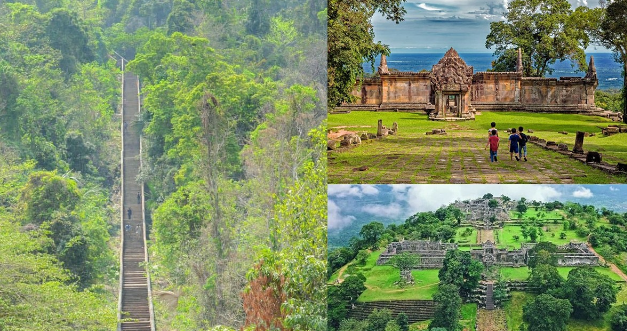
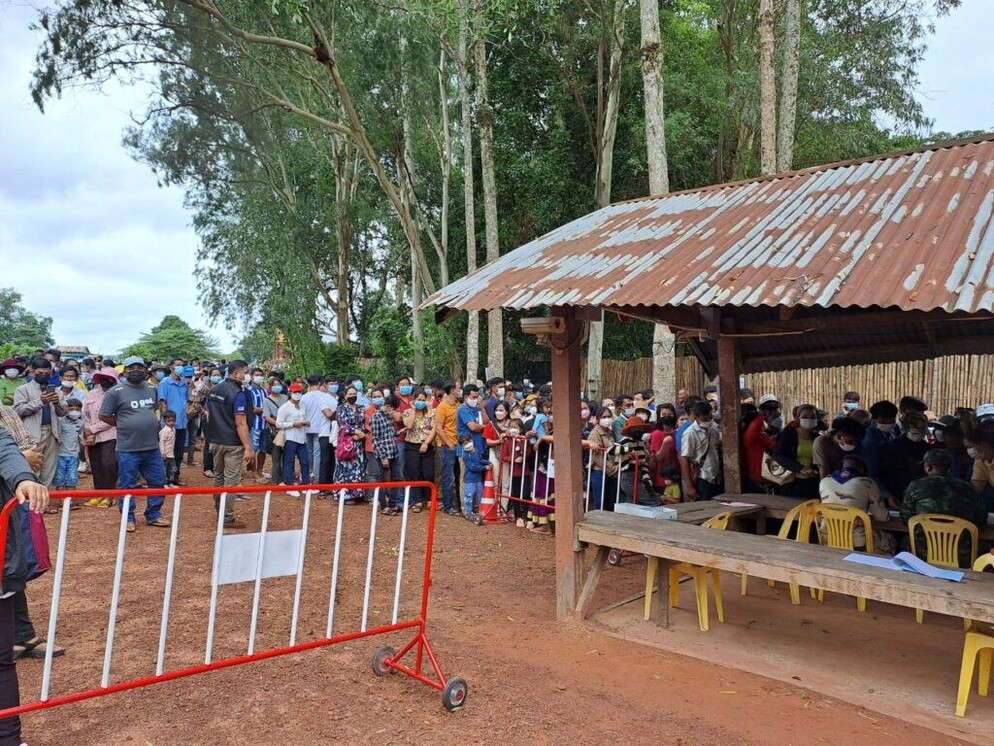
RAC Media
ប្រភព វិទ្យាស្ថានទំនាក់ទំនងអន្តរជាតិនៃកម្ពុជា
រូបភាព រដ្ឋបាលខេត្តព្រះវិហារ និង CNC
 ថ្ងៃសុក្រ, 01 មីនា 2024 ម៉ោង 09:20 PM
ថ្ងៃសុក្រ, 01 មីនា 2024 ម៉ោង 09:20 PM
ឧទ្យានរាជបណ្ឌិត្យសភាកម្ពុជា តេជោសែន ឫស្សីត្រឹប ត្រូវបានបង្កើតនិងទទួលស្គាល់ ដោយព្រះរាជក្រឹត្យលេខ នស/រកត/០៤១៤/៤៣៦ ចុះថ្ងៃទី៨ ខែមេសា ឆ្នាំ២០១៤ មានទំហំ ផ្ទៃដី១១ ៤៣៥ហិកតា មានទីតាំងស្ថិតក្នុងឃុំឆែបមួយ និង ឃុំឆែបពីរ ស្រុកឆែប ខេត្តព្រះវិហារ។
ឧទ្យាននេះមានតំបន់ជីវៈចម្រុះ និងមានសក្តានុពលច្រើនដូចជា ធនធានព្រៃឈើ សត្វព្រៃ កេរដំណែលប្រវត្តិសាស្ត្រ បុរាណវត្ថុវិទ្យា (ឡស្លដែកបុរាណ) និងជាតិពន្ធុកួយ ដែលអាចបម្រើឱ្យមុខងារក្នុងបរិស្ថានព្រៃឈើ វប្បធម៌ ប្រវត្តិសាស្ត្រ និងទេសចរណ៍ បានយ៉ាងប្រសើរ ។
ដោយមើលឃើញពីសក្តានុពលដ៏ច្រើនលើសលប់នេះហើយ ទើបរាជបណ្ឌិត្យសភាកម្ពុជាមានគម្រោងជីកប្រឡាយទឹកព្រំប្រទល់ឧទ្យានរាជបណ្ឌិត្យសភាកម្ពុជា តេជោសែន ឫស្សីត្រឹប ក្នុងគោលបំណងសំខាន់ៗចំនួន៥ មានដូចតទៅ៖
១-ឆ្មាំអាចមានលទ្ធភាពចល័តពេលយាមកាម តាមព្រំដែនបានយ៉ាងងាយស្រួល
២-ផ្តល់ភាពទាក់ទាញ សោភណភាពនិងភាពស្រស់ស្រាយជូនដល់ភ្ញៀវទេសចរណ៍ដែលមកកាន់ទីនេះ
៣-ជាប្រភពទឹកសម្រាប់សត្វព្រៃនិងសត្វបក្សាបក្សីគ្រប់ប្រភេទ
៤-ផ្តល់ភាពងាយស្រួលដល់ការគ្រប់គ្រងធនធាននៅក្នុងឧទ្យាន
៥-សត្វព្រៃគ្រប់ប្រភេទងាយស្រួលក្នុងការផ្លាស់ទីពីកន្លែងមួយទៅកន្លែងមួយទៀត
សូមគូសបញ្ជាក់ផងដែរថា ប្រឡាយទឹកជាព្រំប្រទល់នេះ មានជម្រៅ២ម៉ែត្រទទឹង៣ម៉ែត្រ បណ្តោយ៥២គីឡូម៉ែត្រ ហើយគម្រោងនេះគ្រោងចំណាយថវិកាប្រមាណ ៥២ម៉ឺនដុល្លារ សហរដ្ឋអាម៉េរិក។
ប្រសិនជាឯកឧត្តម លោកជំទាវលោក លោកស្រី អ្នកនាង កញ្ញា បេក្ខជនបណ្ឌិត និងនិស្សិតទាំងអស់ ដែលមានបំណងចូលរួមចំណែកលើការអភិរក្សធនធានធម្មជាតិ សម្បត្តិវប្បធម៌ដ៏មានតម្លៃនៅក្នុងឧទ្យាន សូម ឯកឧត្តម លោកជំទាវលោក លោកស្រី អ្នកនាង កញ្ញា បេក្ខជនបណ្ឌិត និងនិស្សិតទាំងអស់ អញ្ជើញចូលរួមជាវិភាគទានតាមការគួរ ក្នុងការជីកប្រឡាយនេះដើម្បីគុណតម្លៃសម្រាប់ពេលបច្ចុប្បន្ននិងទៅថ្ងៃអនាគត តាមរយៈលេខកុងធនាគារនិងQRកូដខាងក្រោម។
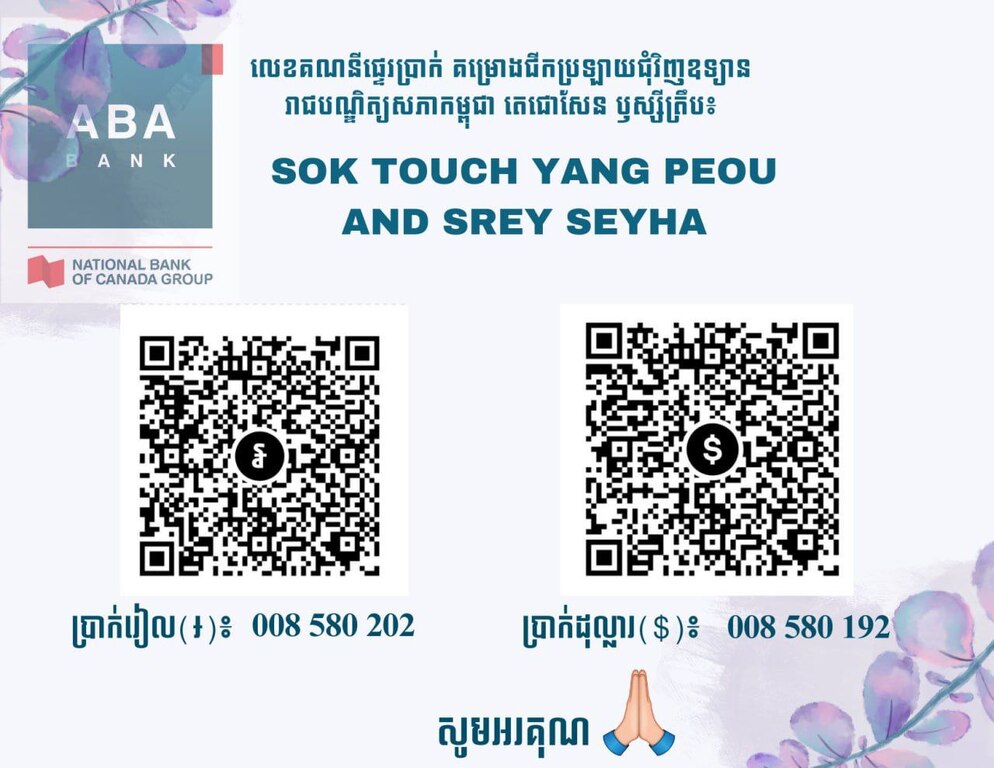
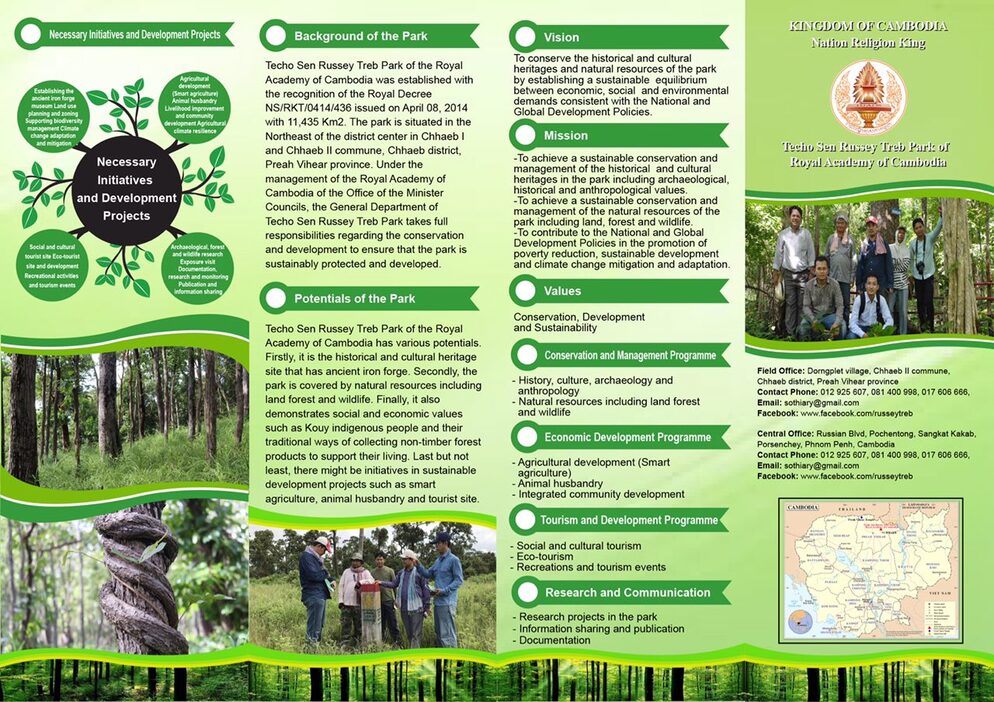
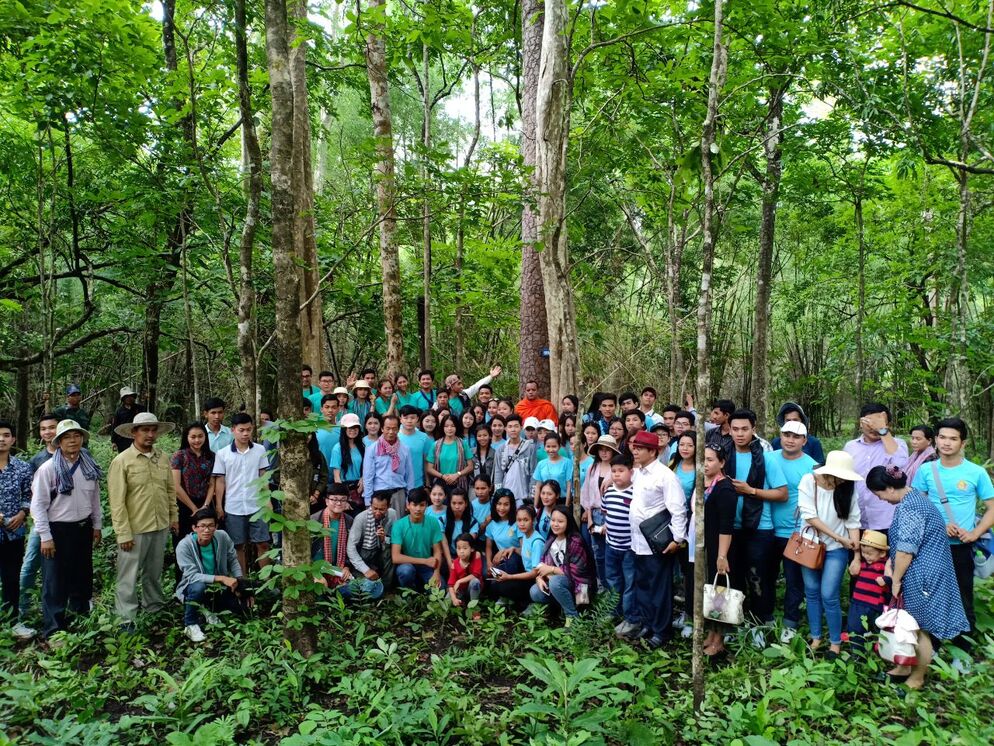
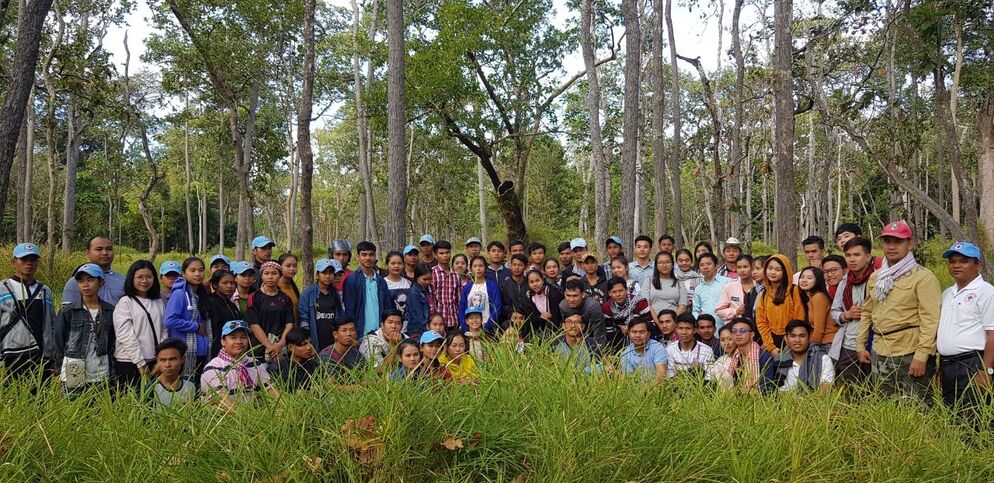
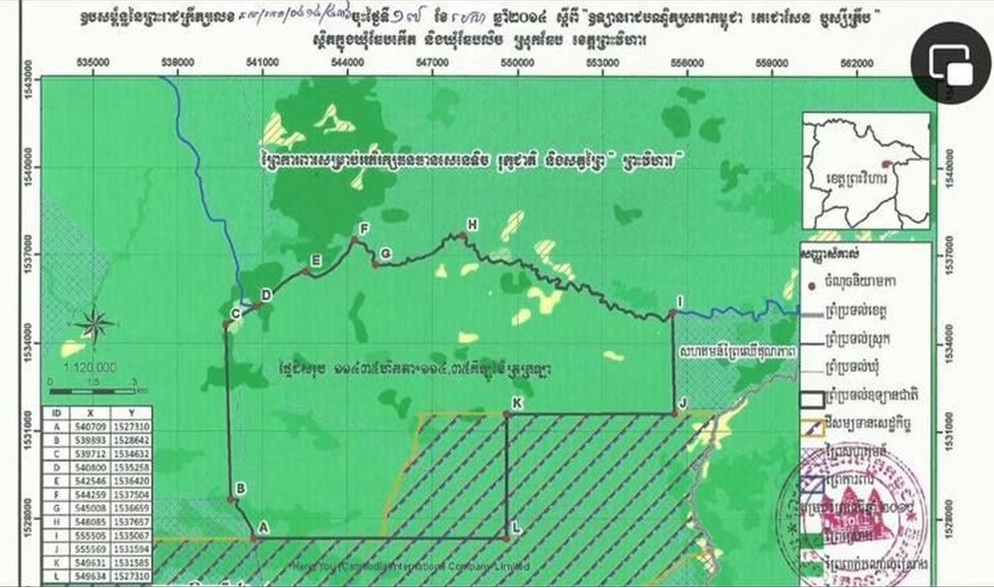
សូមតាមដានទស្សនាវីដេអូផ្ទាល់របស់ឯកឧត្តមបណ្ឌិតសភាចារ្យ សុខ ទូច ប្រធានរាជបណ្ឌិត្យសភាកម្ពុជា តាមរយៈផេកហ្វេសប៊ុក ដូចខាងក្រោម៖
https://www.facebook.com/soktouch7
សូមគោរពអរគុណ និងអរគុណ
 ថ្ងៃព្រហស្បតិ៍, 29 កុម្ភៈ 2024 ម៉ោង 10:52 AM
ថ្ងៃព្រហស្បតិ៍, 29 កុម្ភៈ 2024 ម៉ោង 10:52 AM
អត្ថបទដោយ៖ បណ្ឌិត ទុយ យូឃីម និង បណ្ឌិត ជា វណ្ណី,
វិទ្យាស្ថានមនុស្សសាស្រ្តនិងវិទ្យាសាស្រ្តសង្គម, រាជបណ្ឌិត្យសភាកម្ពុជា
ការអប់រំពីតម្លៃនៃមនុស្ស មានឥទ្ធិពល លើគ្រប់ទិដ្ឋភាពនៃជីវិត វាប៉ះពាល់យ៉ាងខ្លាំង ដល់សក្តានុពលបុគ្គល និងសង្គម។ ទម្រង់នៃ ការអប់រំពីតម្លៃនេះ វាបង្កប់នូវក្រុមសីលធម៌ និង គោលការណ៍មួយចំនួន ដើម្បីបំពាក់ឱ្យបុគ្គល ម្នាក់ៗនូវតម្លៃសីលធម៌ ប្រព្រឹត្តត្រឹមត្រូវតាម សីលធម៌ និងសង្គម ដែលវាដើរតួនាទីយ៉ាង សំខាន់ក្នុងការអភិវឌ្ឍខ្លួនឯង ក៏ដូចជាការរីក ចម្រើនផ្ទាល់ខ្លួន និងសង្គម។ ការអប់រំពីតម្លៃ ជំរុញឱ្យបុគ្គលម្នាក់ៗមានការទទួលខុសត្រូវការ គោរព សុចរិតភាព ឧត្តមភាព និងការតស៊ូ។ តម្លៃសំខាន់ទាំងនេះ ដើរតួជាមូលដ្ឋានគ្រឹះនៃ ការបង្កើតតួអង្គដឹកនាំជាលក្ខណៈបុគ្គល ឆ្ពោះ ទៅរកការបំពេញន័យឱ្យជីវិត ដែលរួមចំណែក ជាវិជ្ជមានដល់សង្គម។ យើងអាចនិយាយបាន ថា ការអប់រំពីតម្លៃ គឺជាមូលដ្ឋានគ្រឹះសម្រាប់ការអភិវឌ្ឍទូទៅរបស់បុគ្គល។ វាជួយក្នុងការបណ្ដុះស្តង់ដារសីលធម៌ កែលម្អសមត្ថភាពនៃ ការគិតប្រកបដោយការរិះគន់ លើកកម្ពស់ ជំនាញសង្គម និងការលើកលើកទឹកចិត្តឱ្យមាន ការចូលរួមយ៉ាងសកម្មក្នុងសហគមន៍ និងសង្គម ដោយហេតុនេះ វាបង្កើតឱ្យមានបុគ្គលដែល មានសមត្ថភាពគ្រប់គ្រាន់ដើម្បីធ្វើអត្តរកម្ម ដោយជោគជ័យក្នុងសង្គម។
តើតម្លៃជាអ្វី? តើមនុស្សម្នាក់ៗត្រូវមាន តម្លៃអ្វីខ្លះ? តើតម្លៃរបស់មនុស្សស្ថិតនៅលើអ្វី? ហេតុអ្វីត្រូវការអប់រំពីតម្លៃ? តើការអប់រំពីតម្លៃ មានសារៈសំខាន់យ៉ាងណាសម្រាប់យើងទាំង អស់គ្នា?
១- តើអ្វីទៅជាតម្លៃ?
តម្លៃ គឺជាគំនិតមួយដែលត្រូវបានរួម ចំណែកដោយប្រជាជនរស់នៅក្នុងសង្គមអំពីអ្វីដែលល្អឬអាក្រក់ អំពីអ្វីដែលខុសឬត្រូវដែលជាចេតនាឬអចេតនា។
ជាទូទៅតម្លៃ គឺជាគំនិតអរូបិយ ដែលគ្របដណ្ដប់ដោយឧត្ដមគតិ និងបំណងរបស់សង្គមមួយ។ តម្លៃគឺជាគំរូនៃឥរិយាបថ ...
ចូលអានអត្ថបទលម្អិតតាមរយៈតំណភ្ជាប់ខាងក្រោម៖
https://www.rac.gov.kh/researchs-categories/1/researchs?page=10
 ថ្ងៃព្រហស្បតិ៍, 29 កុម្ភៈ 2024 ម៉ោង 10:20 AM
ថ្ងៃព្រហស្បតិ៍, 29 កុម្ភៈ 2024 ម៉ោង 10:20 AM
ដោយ ៖ លោក ធន ឆាយពិសិដ្ឋ អនុប្រធានពិសិដ្ឋអនុប្រធាននាយកដ្ឋាននយោបាយនិងច្បាប់អន្តរជាតិ នៃវិទ្យាស្ថានទំនាក់ទំនងអន្តរជាតិនៃកម្ពុជា
គិតមកដល់មកដល់ពេលនេះ សង្រ្គាមរវាងរុស្ស៊ីនិងអ៊ុយក្រែនបានចូលឆ្នាំទីបីដោយគ្មានតម្រុយពីការបញ្ចប់សង្រ្គាម ដែលបង្កនូវមហន្តរាយដ៏ធំធេងមិនចំពោះតែប្រទេសទាំងពីរផ្ទាល់ គឺចំពោះពិភពលោកទាំងមូលតែម្ដងនេះទេ។ សង្រ្គាមនេះបានបង្កឱ្យមានវិបត្តិមនុស្សធម៌យ៉ាងធ្ងន់ធ្ងរ ដោយមនុស្សរាប់លាននាក់ត្រូវភៀសខ្លួនចេញពីផ្ទះសម្បែង។ វាក៏បានជះឥទ្ធិពលយ៉ាងខ្លាំងដល់សេដ្ឋកិច្ចពិភពលោក ដែលបណ្តាលឱ្យតម្លៃថាមពល ស្បៀង ចំណីសត្វ កើនឡើង និងរំខានដល់ច្រវាក់ផ្គត់ផ្គង់ពិភពលោកជាខ្លាំង។
ជាប្រវត្តិសាស្ត្រប្រទេសទាំងពីរ អ៊ុយក្រែនធ្លាប់ជាផ្នែកមួយនៃសហភាពសូវៀត ដែលរុស្ស៊ីជាក្បាលម៉ាស៊ីន ដោយហេតុនេះ ចង់មិនចង់ គេមើលឃើញថា រុស្ស៊ីនៅតែចាត់ទុកអ៊ុយក្រែនជាផ្នែកនៃឥទ្ធិពលរបស់ខ្លួន។ បើទោះជារុស្ស៊ី ព្យាយាមរក្សាអ៊ុយក្រែនឱ្យស្ថិតនៅក្រោមឥទ្ធិពលរបស់ខ្លួនក៏ដោយ ប៉ុន្តែអ៊ុយក្រែន បែរជាបាននិងកំពុងឆ្ពោះទៅរកទំនាក់ទំនងកាន់តែជិតស្និទ្ធជាមួយលោកខាងលិចទៅវិញ ទាំងការសុំចូលជាសមាជិកសហភាពអឺរ៉ុប ជាពិសេសការសុំចូលបក្សសម្ព័ន្ធយោធាណាតូនេះឯងហើយ គឺជាប្រភពនៃភាពតានតឹងរវាងអ៊ុយក្រែនជាមួយរុស្ស៊ីឈានដល់ដំណាក់កាលទុំជោរ។
យើងឃើញថា ភាពតានតឹងរវាងរុស្ស៊ីនិងអ៊ុយក្រែន បានផ្ទុះឡើងអស់រយៈពេលជាច្រើនឆ្នាំមកហើយ ហើយក៏បានឈានដល់កម្រិតកំពូលនៅក្នុងខែកុម្ភៈ ឆ្នាំ២០២២ ពេលរុស្ស៊ីចូលឈ្លានពានចូលអ៊ុយក្រែនឬធ្វើប្រតិបត្តិការយោធាពិសេស តាមការហៅរបស់រុស្ស៊ី។ ការលុកលុយឬប្រតិបត្តិការយោធាពិសេស មកដល់ពេលនេះចូលដល់ឆ្នាំ ទី៣ហើយ តែឆន្ទៈរុស្ស៊ីក្នុងការប្រើប្រាស់កម្លាំងយោធា ដើម្បីសម្រេចបាននូវគោលដៅរបស់ខ្លួន ដែលរុស្ស៊ីអះអាងថាជាការពារខ្លួនពីភ័យគំរាមកំហែងរបស់បស្ចិមប្រទេស ជាពិសេស ការពង្រីកខ្លួនរបស់អង្គការសម្ព័ន្ធយោធាណាតូ មកអឺរ៉ុបខាងកើត ដែលជាបណ្ដាប្រទេសអតីតសហភាពសូវៀត នៅតែរក្សាជំហរដដែល ជាសញ្ញាបង្ហាញឱ្យឃើញថាសង្រ្គាមនេះនឹងអូសបន្លាយយូរបន្តទៅទៀត។ ឯអ៊ុយក្រែនក៏ដូចគ្នា ការទាមទារនៅតែដដែល។ ជាក់ស្ដែងប៉ុន្មានខែចុងក្រោយនេះ អ៊ុយក្រែនបានតឿនពិភពលោក ជាពិសេសអឺរ៉ុបនិងសហរដ្ឋអាម៉េរិកពី ការខ្វះអាវុធនិងទ័ព រហូតដល់មានការដកថយកម្លាំងចេញក្រុងអាហ្វឌីកា ក្រោយពីរុស្ស៊ីវាយប្រហារ ដែលចាត់ទុកជាលើកដំបូងដែលរុស្ស៊ីឈ្នះនៅក្នុងសមរភូមិធំចាប់តាំងពីខែឧសភា ឆ្នាំ២០២៣។ អ៊ុយក្រែនបន្តសុំប្រព័ន្ធការពារដែនអាកាសនិងអាវុធច្រើនបន្ថែមទៀត និងសង្កត់ធ្ងន់ថាពេលនេះ ជាអំឡុងពេលសំខាន់ ដោយរុស្ស៊ីកំពុងត្រៀមវាយប្រហារទ្រង់ទ្រាយធំជាថ្មីមកលើខ្លួន។
សូមរំឮកថា កន្លងមកសហរដ្ឋអាម៉េរិកបានផ្ដល់ជំនួយដោយផ្ទាល់និងប្រយោលដល់អ៊ុយក្រែនយ៉ាងច្រើន ទាំងហិរញ្ញវត្ថុនិងអាវុធ ប៉ុន្តែបញ្ហាអ៊ុយក្រែនហាក់លែងមានការគាំទ្រពីពលរដ្ឋអាម៉េរិក ដោយគិតថាអាម៉េរិកបានជួយដល់អ៊ុយក្រែនច្រើនពេក ហើយតាមការប៉ាន់ស្មានមួយចំនួនថា បញ្ហានេះក៏អាចក្លាយជាមូលហេតុធ្វើឱ្យប្រជាប្រិយភាពរបស់ចូ បៃដិន និងគណបក្សប្រជាធិបតេយ្យធ្លាក់ចុះផងដែរ។
សង្រ្គាមអូសបន្លាយនាំទៅដល់សំណួរថាតើ សហភាពអឺរ៉ុបដែលមានព្រំដែនជាប់ប្រទេសទាំងពីរនេះ និងក្រុមប្រទេសណាតូ នៅតែគាំទ្រហិរញ្ញវត្ថុនិងសព្វាវុធដល់អ៊ុយក្រែនបានយូរប៉ុណ្ណាទៀត ជាពិសេសនៅពេលដែលសង្រ្គាមនៅមជ្ឈឹមបូព៌ាក៏កំពុងផ្ទុះឡើងនិងមិនបង្ហាញពីតម្រុយបញ្ឈប់ក្នុងពេលឆាប់ៗដូចគ្នា។
យើងឃើញថា ចាប់តាំងពីសង្រ្គាមផ្ទុះឡើង សហភាពអឺរ៉ុបបានប្រមូលផ្ដុំធនធានជួយដល់អ៊ុយក្រែន បើគិតទៅលើសពីមួយសែនលានដុល្លារអាម៉េរិកហើយគិតមកដល់ពេលនេះ រីឯចក្រភពអង់គ្លេសបានផ្ដល់ជំនួយមិនតិចជាង ១៥ ០០០លានដុល្លារអាម៉េរិកទេ គិតចាប់ពីឆ្នាំ២០២២មក ដោយឡែកអាម៉េរិក បានផ្ដល់ជំនួយគិតជារួមជាង ១១៣ ០០០លានដុល្លារអាម៉េរិក។
ចង់មិនចង់ សង្រ្គាមដែលអូសបន្លាយធ្វើឱ្យបណ្ដាប្រទេសដែលផ្ដល់ជំនួយដល់អ៊ុយក្រែន ត្រូវចំណាយថវិការបស់ខ្លួនជាបន្តបន្ទាប់ ទន្ទឹមនឹងស្ថានភាពសេដ្ឋកិច្ចពិភពលោក ជាពិសេសអឺរ៉ុបផ្ទាល់ក៏កំពុងរងឱនភាពយ៉ាងខ្លាំងក្លា ហើយបញ្ហាអតិផរណាក៏កំពុងដាក់សម្ពាធលើជីវភាពប្រជាជនរបស់បណ្ដាប្រទេសទាំងនោះឥតឈប់ឈរ ជាហេតុនាំឱ្យមានការរំពឹងថា នឹងនាំមានការរសាយចិត្តនិងមិនចង់ឱ្យរដ្ឋាភិបាលរបស់ខ្លួនលូកដៃចូលទៅក្នុងសង្រ្គាមអូសបន្លាយមួយនេះតទៅទៀត។ ទោះយ៉ាងណកាលពីដើមខែកុម្ភៈនេះ សហភាពអឺរ៉ុបបានយល់ស្របផ្ដល់ជំនួយបន្ថែមដល់អ៊ុយក្រែនក្នុងទឹកប្រាក់ ៥៤,០០០លានដុល្លារអាម៉េរិក រហូតដល់ឆ្នាំ២០២៧។ ការផ្ដល់ជំនួយថវិកាដែលមានចំនួនដ៏ច្រើនលើសលុប អាចក្លាយទៅជាបញ្ហានយោបាយរបស់រដ្ឋាភិបាលនីមួយៗ ទន្ទឹមនោះក៏ត្រូវបំបែរចំណាប់អារម្មណ៍មួយភាគធំទៅលើបញ្ហានៅមជ្ឈឹមបូព៌ា ហើយម្យ៉ាងនៅអំឡុងខែមិថុនាខាងមុខក៏មានការបោះឆ្នោតសភាអឺរ៉ុប ដែលគេរំពឹងថាវានឹងជាបញ្ហាខាងនយោបាយដ៏សំខាន់មួយក្នុងតំបន់ផងដែរ។
បញ្ហាដ៏ធំមួយទៀតគឺ លទ្ធភាពជំនួយពីសហរដ្ឋអាម៉េរិកអាចនឹងប្រឈមការប្រែប្រួល ប្រសិនបើគណបក្សប្រជាធិបតេយ្យចាញ់ឆ្នោត ដូច្នេះ ដើម្បីឈ្នះសង្រ្គាម តើអឺរ៉ុបអាចផ្គត់ផ្គង់អាវុធដល់រដ្ឋាភិបាលអ៊ុយក្រែនដោយមិនចាំបាច់ពឹងផ្អែកលើជំនួយពីសហរដ្ឋអាមេរិកបានដែរឬទេ។ ប៉ុន្តែ អឺរ៉ុបខ្លួនឯង មិនមានរោងចក្រផលិតអាវុធឯករាជ្យ ដើម្បីផ្គត់ផ្គង់អ៊ុយក្រែននោះទេ។
ចូលដល់ឆ្នាំទីបី សង្រ្គាមអូសបន្លាយដោយមិនមានតម្រុយពីការបញ្ចប់សោះឡើយ ទាំងរុស្ស៊ី អ៊ុយក្រែន និងសម្ព័ន្ធមិត្រអឺរ៉ុបនិងអាម៉េរិក ហាក់គ្មានជំហរបញ្ចប់សង្រ្គាមដោយការចរចាសោះ ដោយភាគីនីមួយៗព្យាយាមអះអាងពីភាពត្រឹមត្រូវរៀងៗខ្លួនក្នុងការប្រើកម្លាំង។ មកដល់ពេលនេះ បើតាមសម្ដីរបស់លោកហ្សេលែនស្គី ទាហានរបស់អ៊ុយក្រែនបានស្លាប់ចំនួន ៣១,០០០នាក់ ហើយទាហានរុស្ស៊ីស្លាប់ ១៨០ ០០០នាក់ និងរបួស ៥០០ ០០០នាក់ និងតាមអង្គការអន្តរជាតិសម្រាប់ការធ្វើចំណាកស្រុក (IOM) បាននិយាយថា ចាប់តាំងពីថ្ងៃទី ២៤ខែកុម្ភៈ ឆ្នាំ២០២២ មនុស្សចំនួន ១០ ៥៨២នាក់ នៅក្នុងប្រទេសអ៊ុយក្រែនបានស្លាប់ ១៩ ៨៧៥នាក់ បានរងរបួស,
១៤លាននាក់ត្រូវបានផ្លាស់ទីលំនៅ និងមនុស្សចំនួន៦,៥លាននាក់ បានស្វែងរកការភៀសខ្លួននៅខាងក្រៅប្រទេស។
សង្រ្គាមនេះបានជះឥទ្ធិពលយ៉ាងខ្លាំងដល់សេដ្ឋកិច្ចពិភពលោក។ វាធ្វើឱ្យតម្លៃថាមពលកើនឡើង និងរំខានដល់ច្រវាក់ផ្គត់ផ្គង់ ដែលនាំឱ្យតម្លៃទំនិញនិងសេវាកម្មឡើងថ្លៃ ទន្ទឹមនោះវាក៏បានធ្វើឱ្យមានការព្រួយបារម្ភយ៉ាងខ្លាំងអំពីសន្តិសុខរបស់ប្រទេសផ្សេងៗទៀតទាំងនៅក្នុងតំបន់ ក៏ដូចជាពិភពលោកទាំងមូល ពោលជា វិបត្តិភូមិសាស្ត្រនយោបាយដ៏ធំមួយដែលនឹងមានផលវិបាករយៈពេលវែង។ ទន្ទឹមនឹងនោះ មកដល់ពេលនេះ មិនទាន់មាននរណាម្នាក់អាចឆ្លើយទៅនឹងសំណួរថា “តើសង្គ្រាមនេះនឹងចប់ពេលណា?” នៅឡើយទេ បើសហរដ្ឋអាម៉េរិកនិងណាតូនៅតែប្រើប្រាស់យុទ្ធសាស្ត្រសង្គ្រាមខ្ចីដៃ (Proxy war) នៅអ៊ុយក្រែនទល់នឹងរុស្ស៊ី។ សង្គ្រាមអាចចប់ បើពួកមហាអំណាចចង់បញ្ចប់វា៕
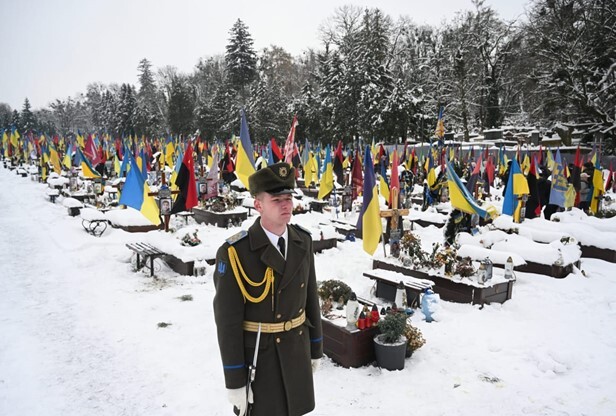
(ការយល់ឃើញក្នុងអត្ថបទខាងលើនេះ ជាទស្សនៈផ្ទាល់របស់អ្នកនិពន្ធ មិនឆ្លុះបញ្ចាំងពីទស្សនៈរបស់ស្ថាប័ននោះទេ។)
 ថ្ងៃព្រហស្បតិ៍, 29 កុម្ភៈ 2024 ម៉ោង 09:07 AM
ថ្ងៃព្រហស្បតិ៍, 29 កុម្ភៈ 2024 ម៉ោង 09:07 AM
Mr. Peou Sedara, Official of the Department of International Law and Diplomacy, International Relations Institute of Cambodia (IRIC)
The Association of Southeast Asian Nations (ASEAN) has been a cornerstone of regional cooperation and stability in Southeast Asia since its inception in 1967. The organization's success is largely attributed to its diplomatic strategies, which have fostered unity among its diverse member states. However, in the face of rising geopolitical tensions, economic disparities, and social challenges, ASEAN's unity is being tested. In this sense, it’s crucial to explore various diplomatic strategies that can be employed to strengthen ASEAN unity and ensure the organization's continued relevance and effectiveness in the 21st century.
First, building Consensus through Enhanced Dialogue Mechanisms: One of the key diplomatic strategies for strengthening ASEAN unity is enhancing dialogue mechanisms to build consensus on critical issues. ASEAN's principle of decision-making by consensus has been a fundamental aspect of its diplomacy. However, as the region faces more complex challenges, there is a need for more robust dialogue mechanisms that can facilitate deeper discussions and more effective conflict resolution. Establishing regular high-level summits, sector-specific dialogues, and informal consultations can provide platforms for member states to engage in open and constructive discussions, leading to stronger consensus and collective decision-making.
Second, promoting Inclusivity and Equal Participation: ASEAN's diversity is both a strength and a challenge. To enhance unity, diplomatic efforts must focus on promoting inclusivity and ensuring the equal participation of all member states, regardless of their economic or political power. Initiatives such as the Initiative for ASEAN Integration (IAI) and the ASEAN Community Vision 2025 aim to narrow the development gap and promote inclusivity. Diplomacy should further encourage the active involvement of smaller or less developed member states in decision-making processes and regional initiatives, ensuring that their voices are heard and their interests are represented.
Third, strengthening Institutional Capacity: The effectiveness of ASEAN's diplomacy is closely tied to the strength of its institutions. Strengthening the institutional capacity of the ASEAN Secretariat and other key bodies is essential for enhancing coordination, implementation, and monitoring of regional initiatives. This can be achieved through increased funding, capacity-building programs, and the adoption of modern management practices. A stronger institutional framework will enable ASEAN to respond more effectively to emerging challenges and ensure the successful implementation of its diplomatic strategies.
Fourth, enhancing External Relations and Strategic Partnerships: ASEAN's diplomacy extends beyond its member states, with external relations playing a crucial role in its strategic positioning. Strengthening partnerships with key global and regional actors, such as China, the United States, the European Union, and other regional organizations, is vital for enhancing ASEAN's influence and ensuring its interests are represented on the global stage. Through strategic partnerships, ASEAN can leverage external support for its initiatives, enhance its capacity to address transnational challenges and promote a rules-based international order.
Fifth, fostering People-to-People Connectivity: ASEAN unity is not just about government-level diplomacy; it also involves fostering connections among the peoples of Southeast Asia. Cultural diplomacy, educational exchanges, and people-to-people connectivity programs can help build a sense of ASEAN identity and solidarity. Initiatives like the ASEAN Youth Volunteer Program (AYVP) and the ASEAN University Network (AUN) are examples of how people-to-people connectivity can be enhanced. By promoting mutual understanding and cultural appreciation, ASEAN can strengthen the social foundation of its unity.
Lastly, adapting to Emerging Challenges: The regional and global landscape is constantly evolving, presenting new challenges to ASEAN unity. Diplomatic strategies must be adaptable and forward-looking to address issues such as digital transformation, climate change, and non-traditional security threats. ASEAN must be proactive in developing policies and frameworks that address these emerging challenges while ensuring that its diplomatic approaches remain inclusive and consensus-driven.
In conclusion, strengthening ASEAN unity requires a multifaceted approach to diplomacy that addresses both internal and external challenges. By enhancing dialogue mechanisms, promoting inclusivity, strengthening institutional capacity, fostering people-to-people connectivity, and adapting to emerging challenges, ASEAN can ensure its continued relevance and effectiveness in the 21st century. As the region faces an increasingly complex geopolitical landscape, the need for a united and resilient ASEAN has never been more critical. Through concerted diplomatic efforts, ASEAN can navigate the challenges ahead and continue to be a beacon of regional cooperation and stability.
The views expressed above are his own, not the point of view of the institution.
 ថ្ងៃព្រហស្បតិ៍, 29 កុម្ភៈ 2024 ម៉ោង 08:53 AM
ថ្ងៃព្រហស្បតិ៍, 29 កុម្ភៈ 2024 ម៉ោង 08:53 AM
រាជរដ្ឋាភិបាលកម្ពុជាមានមហិច្ឆតាក្នុងការផ្លាស់ប្ដូរពីប្រទេសដែលមានចំណូលមធ្យមកម្រិតទាប ទៅជាប្រទេសដែលមានចំណូលមធ្យមកម្រិតខ្ពស់ក្នុងឆ្នាំ២០៣០ ហើយបន្តក្លាយជាប្រទេសអភិវឌ្ឍនូវកំណើនសេដ្ឋកិច្ច និងការប្រកួតប្រជែងនាពេលបច្ចុប្បន្ននិងពេលអនាគតរបស់កម្ពុជា។
កត្តាចម្បងនិងយ៉ាងសំខាន់បំផុតនៃគោលនយោបាយរបស់រាជរដ្ឋាភិបាលនៃព្រះរាជាណាចក្រកម្ពុជា គឺការទទួលបាននូវស្ថិរភាពនយោបាយ ការអភិវឌ្ឍសេដ្ឋកិច្ចនិងសង្គមជាតិ។ តួយ៉ាង ការរក្សាស្ថិរភាពម៉ាក្រូសេដ្ឋកិច្ច និងការអភិវឌ្ឍវិស័យឯកជនឱ្យកាន់តែរស់រវើក តាមរយៈការលើកកម្ពស់បរិយាកាសធុរកិច្ច និងវិនិយោគ ដែលជាប្រភពនៃការបង្កើតការងារក្នុងគ្រប់វិស័យ ព្រមទាំងជាចលករសម្រាប់ជំរុញកំណើនសេដ្ឋកិច្ចជាតិ។ ការបង្កើតតំបន់សេដ្ឋកិច្ចពិសេស ត្រូវបានប្រទេសកំពុងអភិវឌ្ឍបាននឹងកំពុងបង្កើត និងអភិវឌ្ឍនូវតំបន់នេះយ៉ាងច្រើនគួរឱ្យកត់សម្គាល់ក្នុងរយៈពេលប៉ុន្មានឆ្នាំចុងក្រោយនេះ។
សូមចូលអានខ្លឹមសារបន្ថែម ឬមានអត្ថបទជាច្រើនទៀត តាមរយ:តំណភ្ជាប់ដូចខាងក្រោម៖
https://rac.gov.kh/researchs-categories/18/researchs?page=2
 ថ្ងៃចន្ទ, 26 កុម្ភៈ 2024 ម៉ោង 03:16 PM
ថ្ងៃចន្ទ, 26 កុម្ភៈ 2024 ម៉ោង 03:16 PM
សេចក្ដីជូនដំណឹង ស្តីពី"ការអញ្ជើញចូលរួមដេញថ្លៃ ការផ្គត់ផ្គង់ប្រេងឥន្ធនៈប្រចាំឆ្នាំ២០២៤ សម្រាប់ជរាជបណ្ឌិត្យសភាកម្ពុជា ចាប់ពីថ្ងៃទី១៨ មេសា ឆ្នាំ២០២៤។ *ចាប់ទទួលលក់ពាក្យដេញថ្លៃពីថ្ងៃនេះតទៅ រហូតដល់ថ្ងៃទី១៨ ខែមេសា ឆ្នាំ២០២៤ វេលាម៉ោង ១០.៣០នាទីព្រឹក។ ទូរសព្ទទំនាក់ទំនង : ០២៣ ៨៩០ ១៨០។
ថ្ងៃចន្ទ, 08 មេសា 2024 ម៉ោង 02:35 PM
សេចក្ដីជូនដំណឹង ស្តីពីការ ចូលរួមដេញថ្លៃ ផ្គត់ផ្គង់សម្ភារៈអេឡិចត្រូនិកសម្រាប់រាជបណ្ឌិត្យសភាកម្ពុជា ចាប់ពីថ្ងៃទី៥ មិថុនា ឆ្នាំ២០២៣។ *កាលបរិច្ឆេទឈប់ទទួលពាក្យដេញថ្លៃ៖ ថ្ងៃទី៣០ ខែមិថុនា ឆ្នាំ២០២៣ វេលាម៉ោង ១០.៣០នាទីព្រឹក។ ទូរសព្ទទំនាក់ទំនង : 012 78 36 46។
ថ្ងៃសុក្រ, 02 មិថុនា 2023 ម៉ោង 09:21 PM
វគ្គសិក្សាថ្មី សម្រាប់ឆ្នាំសិក្សាថ្មី ឆ្នាំ២០២២-២០២៣ ! សម្រាប់ថ្នាក់បរិញ្ញាបត្រជាន់ខ្ពស់ និងថ្នាក់បណ្ឌិត នៅរាជបណ្ឌិត្យសភាកម្ពុជា ចាប់ផ្តើមទទួលចុះឈ្មោះហើយ.... ព័ត៌មានលម្អិត សូមទាក់ទងមជ្ឈមណ្ឌលបណ្តុះបណ្តាលនិងស្រាវជ្រាវនៃរាជបណ្ឌិត្យសភាកម្ពុជា (អគារឥន្រ្ទទេវី) ឬតាមរយៈទូរសព្ទ៖ 067-811-667 / 010-268-797 / 099-238-677 / 097 728 4444
ថ្ងៃចន្ទ, 22 សីហា 2022 ម៉ោង 03:11 PM